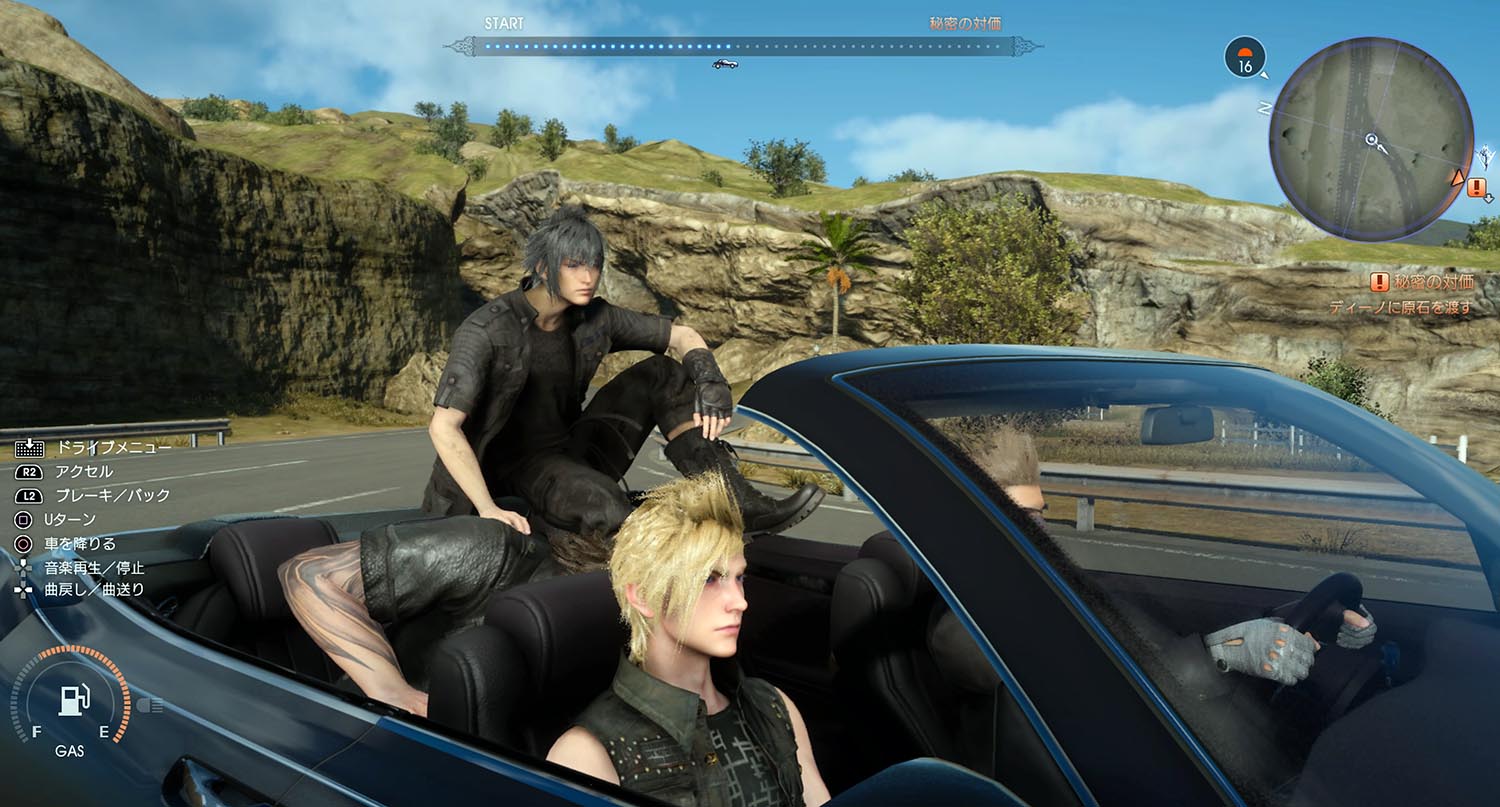Game State is a column by artist Oliver Payne covering the mechanics, aesthetics and ideas of video games.
Famously, the painting The Ambassadors by Hans Holbein the Younger (1533) displays an anamorphic image of a skull inviting viewers to shift their physical perspective — and the very idea of linear perspective itself as developed in Renaissance — in order to make the form familiar. It has been speculated that the piece was intended to be hung on a staircase so the descending viewer would always see the skull. More recently, a five-panel painting by Laura Owens (Untitled, 2015), on display at the Whitney Museum of American Art, could be wholly perceived only by fixing oneself to a specific spot in the gallery. Artists occasionally, but not very often, ask the viewer to work a little harder to see the whole picture. We, as human viewers, classically experience pictures straight on, a strict limitation of the possible affordances of both the canvas and of the viewer.
A unique attribute of the black box of computation is its ability to provide all possible perspectives of a 3-D environment simultaneously. In a video game the computer engine is always in possession of every conceivable viewpoint within the game, but must deliver it sequentially to the player via the “window” of the monitor or screen. Certain games have played with the fissures and tensions between the always-on-ness of the simulated space and the player’s fixed viewpoint of it by being both “flat” and “deep” at the same time.
Echochrome (Game Yarouze, 2008) is a striking example of this logic at work. It is a game about guiding an artist’s articulated mannequin through a series of impossible structures, but really Echochrome is very much “M. C. Escher: The Game.” (In fact, if the term “art game” has ever held any meaning, it’s here.) The goal of the game is achieved through carefully maneuvering a 3-D model of an impossible structure around until it presents itself to the player at such an angle that it makes some kind of physical and structural sense, allowing the mannequin to traverse the space in accordance with our own spatial understanding.
Portal (Valve, 2007) is a first-person perspective puzzle game that plays with ideas of dimensional comprehension. You play a voiceless protagonist named Chell, a test subject in the Aperture Science Lab’s test chambers designed by a malevolent AI named GLaDOS.
As Chell, your goal is to navigate through and escape from a series of increasingly complicated and challenging levels, using the Aperture Science Handheld Portal Device or “portal gun.” The portal gun enables the player to make interdimensional portals between the physical planes of her 3-D surroundings. By placing portals on two flat surfaces, Chell creates an interspatial shortcut and can effortlessly pass through one portal and out the other. Using the portal gun to fold space in on itself, two distinct and separate places become either side of a single plane. Peering through one provides the view from the other.
Gorogoa (Jason Roberts/Buried Signal, 2017) takes an entirely different position. Mechanically, Gorogoa differs from these games in that it is neither first nor third person but is rather a point-and-click game. Perhaps more importantly, it is not experienced entirely sequentially.
The field of play is a two-by-two grid of pictorial squares that must be moved around, zoomed in and out of, and placed on top of one another in order to solve a series of puzzles. The images contained within each square are a fragment of a puzzle that serves to tell a larger, overarching narrative involving a mythical creature and an elderly man’s lifelong obsession with it. Episodes from the man’s life appear in fragments throughout the squares. The challenge is in putting them back together. Cryptozoology, mythology, and folklore provide the set dressing for the intricate time- and space-based problems that the player must guide the protagonist through. Much like Echochrome, the player must move and manipulate the environment rather than the avatar or sprite.
The squares in Gorogoa act as both window and picture frame, telescope, camera, and page. Working with them is like having multiple windows and tabs open on your desktop, or perhaps like moving, stacking, and rearranging a deck of picture cards.
The routes or paths the player must take to reach the puzzle’s solutions are not traversed spatially from point A to B but rather in the shuffle of the deck. Each square can be moved to either side, or under or above the other squares, so movement from one square to another can take place not only on the x and y, but also along the z axis. Certain time-based puzzles require the player to keep track not only of what congruent elements are taking place in each square, but also where and when they occur. This becomes an exercise in understanding the logic of how these squares can relate to each other in terms of scale and time.
It is precisely because the player has only one fixed position from which to view all of this that Gorogoa requires a stretching of spatial reasoning from human to something altogether alien.
Many aspects of Gorogoa run counter to our general understanding of games and their production. For one thing, it’s entirely hand drawn in a style reminiscent of the 1985 puzzle book Maze by Christopher Manson, and it was developed over seven years by its sole creator, Jason Roberts. Roberts understands exactly what a video game can be and what differentiates it from other mediums. Despite the game’s beguiling tactility and interactive, clockwork comic-book nature, it draws inspiration from the fantastical and incomprehensible nature of computation itself.


